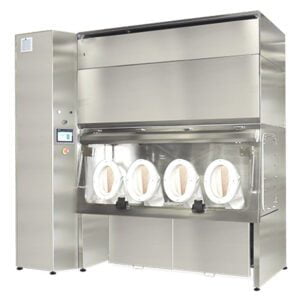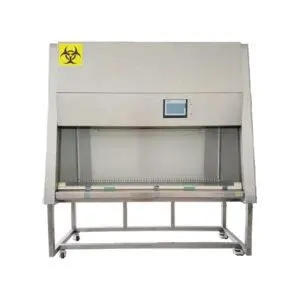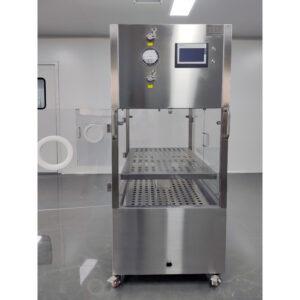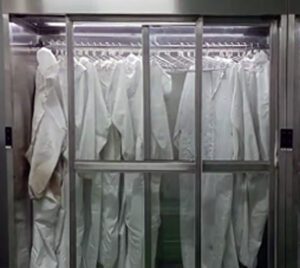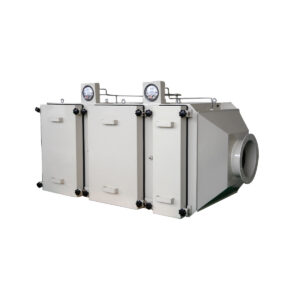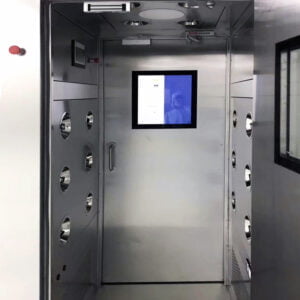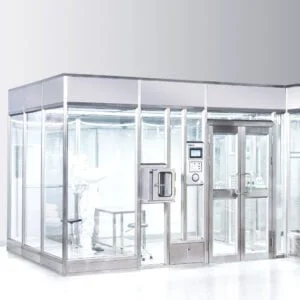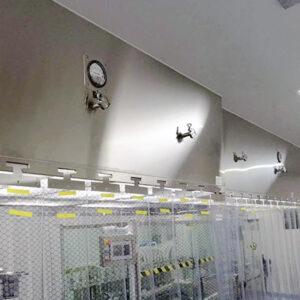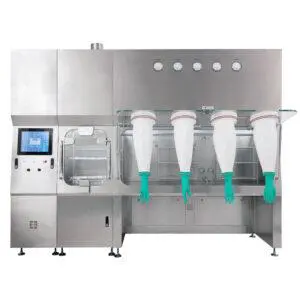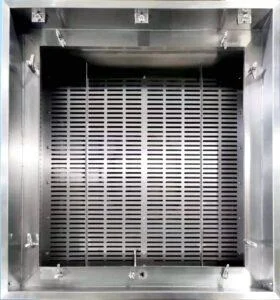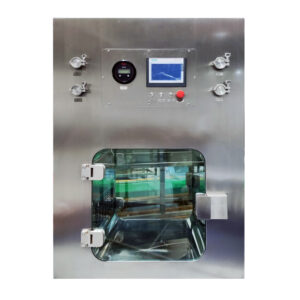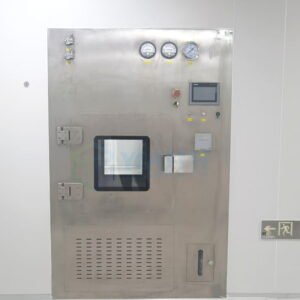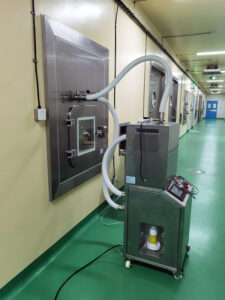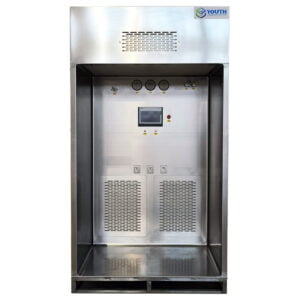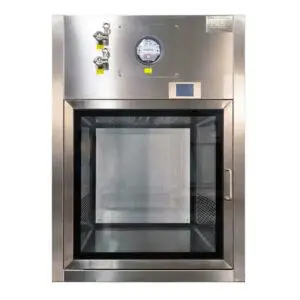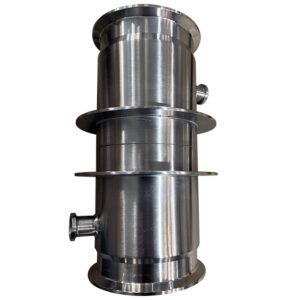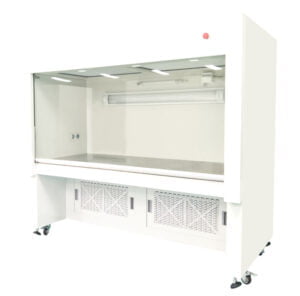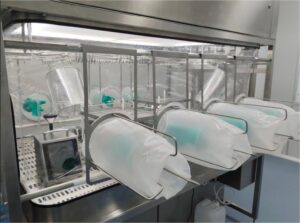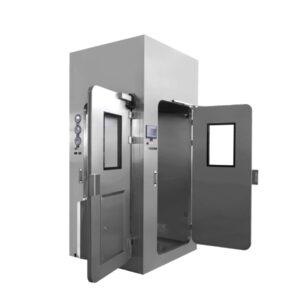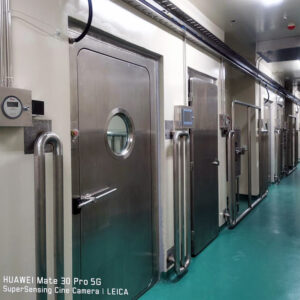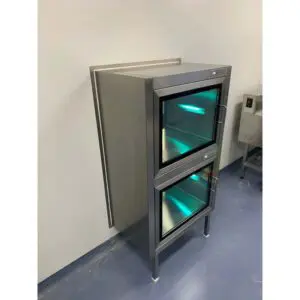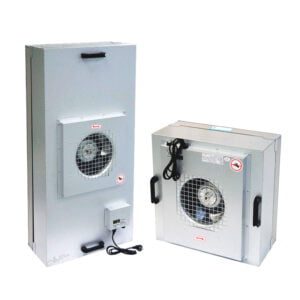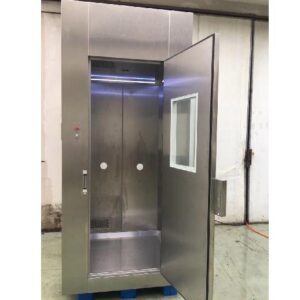Modular designs are revolutionizing the way we approach facility construction and management. In the realm of cleanroom and laboratory environments, BIBO (Bag-In-Bag-Out) systems have become increasingly popular due to their flexibility and efficiency. This article delves into the world of modular BIBO designs, exploring how they offer unparalleled adaptability for various facilities while maintaining strict contamination control standards.
The concept of modular BIBO designs combines the principles of modularity with the contamination control benefits of BIBO systems. This innovative approach allows facilities to create customizable, scalable, and easily maintainable clean environments. From pharmaceutical labs to semiconductor manufacturing plants, modular BIBO designs are transforming the way we think about cleanroom infrastructure.
As we explore the intricacies of modular BIBO design concepts, we'll uncover the key advantages they offer, including reduced installation time, improved flexibility, and enhanced safety features. We'll also examine how these systems can be tailored to meet specific industry requirements and regulatory standards.
Modular BIBO designs represent a significant leap forward in cleanroom technology, offering a perfect blend of flexibility, efficiency, and contamination control.
Now, let's dive deeper into the world of modular BIBO designs and explore how they're reshaping facility management across various industries.
What are the core principles of modular BIBO design?
At the heart of modular BIBO design lies a set of core principles that guide its implementation and functionality. These principles are rooted in the need for flexibility, efficiency, and stringent contamination control in critical environments.
Modular BIBO designs combine the advantages of modular construction with the contamination control benefits of BIBO systems. This approach allows for the creation of customizable, scalable, and easily maintainable clean environments that can be adapted to various facility needs.
The fundamental principles of modular BIBO design include:
- Flexibility: The ability to reconfigure and expand the system as needs change.
- Contamination Control: Maintaining a strict barrier between clean and potentially contaminated areas.
- Efficiency: Streamlining installation, maintenance, and operation processes.
- Scalability: Allowing for easy expansion or reduction of cleanroom space.
Modular BIBO designs prioritize adaptability without compromising on the rigorous contamination control standards required in critical environments.
To better understand these principles, let's look at a comparison of traditional cleanroom designs versus modular BIBO designs:
| Feature | Traditional Cleanroom | Modular BIBO Design |
|---|---|---|
| Flexibility | Limited, often fixed | Highly adaptable |
| Installation Time | Weeks to months | Days to weeks |
| Expansion Capability | Difficult and disruptive | Easy and minimally disruptive |
| Contamination Control | Variable, depends on design | Consistent, built-in BIBO system |
| Cost Efficiency | High initial cost, less efficient long-term | Lower initial cost, more efficient long-term |
By adhering to these core principles, modular BIBO designs offer a superior solution for facilities that require both stringent contamination control and the ability to adapt to changing needs. This approach has revolutionized the way we think about cleanroom infrastructure, providing a more flexible and efficient alternative to traditional fixed designs.
How does modular BIBO design enhance facility flexibility?
One of the most significant advantages of modular BIBO design is its ability to enhance facility flexibility. This feature is particularly crucial in industries where rapid adaptation to changing requirements is essential for maintaining competitiveness and compliance with evolving regulations.
Modular BIBO designs offer unparalleled flexibility by allowing facilities to easily reconfigure, expand, or relocate their cleanroom spaces. This adaptability is achieved through the use of pre-fabricated, standardized components that can be quickly assembled, disassembled, and rearranged as needed.
The flexibility of modular BIBO designs extends to various aspects of facility management:
- Space Utilization: Easily optimize cleanroom layouts to accommodate new equipment or processes.
- Capacity Scaling: Quickly expand or reduce cleanroom space in response to production demands.
- Process Changes: Adapt to new manufacturing processes or research requirements with minimal disruption.
- Relocation: Move entire cleanroom setups to new locations with relative ease.
Modular BIBO designs empower facilities to respond swiftly to changing needs, ensuring that cleanroom infrastructure never becomes a bottleneck in operational efficiency or innovation.
To illustrate the flexibility of modular BIBO designs, consider the following scenario:
| Scenario | Traditional Cleanroom | Modular BIBO Design |
|---|---|---|
| Expansion Needed | Requires extensive construction, potential shutdown | Add pre-fabricated modules, minimal disruption |
| Process Change | May require complete redesign | Reconfigure existing modules |
| Relocation | Decommission and rebuild | Disassemble, move, and reassemble |
| Equipment Upgrade | Limited by fixed layout | Easily adapt layout to accommodate new equipment |
The flexibility offered by modular BIBO designs is particularly valuable in industries such as pharmaceuticals, biotechnology, and electronics manufacturing, where rapid changes in technology and regulatory requirements are common. By adopting these flexible designs, facilities can ensure they remain agile and responsive to market demands while maintaining the highest standards of contamination control.
What are the key components of a modular BIBO system?
Understanding the key components of a modular BIBO system is essential for appreciating its functionality and advantages. These systems are designed to provide a flexible, efficient, and contamination-controlled environment for critical processes.
The main components of a modular BIBO system include:
- Modular Panels: Pre-fabricated wall, ceiling, and floor panels that form the cleanroom structure.
- BIBO Filter Housings: Specialized housings that allow for safe filter changes without contaminating the clean space.
- Airlocks and Pass-Through Chambers: Controlled entry and exit points that maintain pressure differentials and minimize contamination.
- HVAC Systems: Customized air handling units that maintain proper air flow, temperature, and humidity levels.
- Monitoring and Control Systems: Integrated sensors and controls for maintaining and documenting environmental conditions.
Each of these components plays a crucial role in the overall functionality of the modular BIBO system.
The seamless integration of these key components creates a robust, flexible, and highly efficient cleanroom environment that can be easily adapted to various facility needs.
To better understand the function of each component, let's look at a breakdown of their roles:
| Component | Primary Function | Modular Advantage |
|---|---|---|
| Modular Panels | Form cleanroom structure | Easy to reconfigure or expand |
| BIBO Filter Housings | Allow safe filter changes | Maintain cleanliness during maintenance |
| Airlocks | Control entry/exit | Can be added or removed as needed |
| HVAC Systems | Maintain air quality | Scalable to match room size |
| Monitoring Systems | Ensure compliance | Easily integrated with modular design |
The modular nature of these components allows for easy customization and adaptation to specific facility requirements. For instance, a pharmaceutical company using YOUTH filtration systems can easily integrate these into their modular BIBO design, ensuring optimal air quality while maintaining the flexibility to reconfigure their cleanroom as needed.
By understanding these key components, facility managers can better appreciate the versatility and efficiency of modular BIBO systems, and make informed decisions about implementing these solutions in their own facilities.
How do modular BIBO designs improve contamination control?
Contamination control is paramount in critical environments such as cleanrooms, and modular BIBO designs excel in this aspect. These systems offer superior contamination control through their innovative design and integration of BIBO (Bag-In-Bag-Out) technology.
Modular BIBO designs improve contamination control in several ways:
- Sealed System: The modular panels create a tightly sealed environment, minimizing the risk of external contaminants entering the cleanroom.
- BIBO Filter Changes: The BIBO system allows for filter changes without breaching the cleanroom integrity, significantly reducing the risk of contamination during maintenance.
- Pressure Cascades: Modular designs facilitate the creation of pressure cascades between different zones, further enhancing contamination control.
- Efficient Airflow: The integrated HVAC systems in modular designs ensure optimal airflow patterns, helping to remove particles and maintain cleanliness.
These features work together to create a robust contamination control system that meets or exceeds industry standards.
Modular BIBO designs represent a significant advancement in contamination control, offering a level of protection that is difficult to achieve with traditional cleanroom designs.
To illustrate the contamination control advantages of modular BIBO designs, consider the following comparison:
| Aspect | Traditional Cleanroom | Modular BIBO Design |
|---|---|---|
| Filter Changes | May require cleanroom shutdown | Performed without breaching cleanroom integrity |
| Seal Integrity | Can degrade over time | Maintained through modular construction |
| Pressure Control | May fluctuate during door openings | Better maintained through airlock systems |
| Particle Removal | Dependent on fixed HVAC system | Optimized through customizable airflow patterns |
The superior contamination control offered by modular BIBO designs is particularly crucial in industries such as pharmaceuticals, biotechnology, and semiconductor manufacturing, where even minute contamination can have significant consequences. By implementing BIBO modular design concepts, facilities can ensure they maintain the highest standards of cleanliness and product quality.
What are the cost implications of implementing modular BIBO designs?
When considering the implementation of modular BIBO designs, it's essential to understand the cost implications. While the initial investment may seem substantial, the long-term benefits often result in significant cost savings and return on investment.
The cost implications of modular BIBO designs can be broken down into several categories:
- Initial Investment: The upfront cost may be higher than traditional cleanroom construction due to the specialized components and design.
- Installation Costs: Modular designs typically have lower installation costs due to faster assembly times and reduced on-site labor.
- Operational Costs: Energy efficiency and easier maintenance can lead to lower operational costs over time.
- Expansion and Modification Costs: The ability to easily reconfigure or expand the system can result in substantial savings compared to traditional cleanroom modifications.
- Downtime Costs: Reduced downtime during installation and maintenance translates to lower production loss costs.
When evaluating these cost factors, it's important to consider both the short-term and long-term financial impacts.
While the initial investment in modular BIBO designs may be higher, the long-term cost savings and operational benefits often result in a lower total cost of ownership compared to traditional cleanroom designs.
To better understand the cost implications, let's look at a comparative breakdown:
| Cost Factor | Traditional Cleanroom | Modular BIBO Design |
|---|---|---|
| Initial Investment | Lower upfront cost | Higher upfront cost |
| Installation Time | Weeks to months | Days to weeks |
| Operational Costs | Higher energy and maintenance costs | Lower due to efficiency and easier maintenance |
| Expansion Costs | High, often requires extensive renovation | Lower, modular components easily added |
| Downtime During Changes | Significant | Minimal |
It's worth noting that the specific cost implications can vary depending on the scale of the project, industry requirements, and local factors. However, in many cases, the flexibility and efficiency of modular BIBO designs lead to substantial cost savings over the life of the cleanroom.
For example, a facility implementing BIBO modular design concepts might find that while their initial investment is higher, they save significantly on energy costs due to more efficient HVAC systems, and on expansion costs when they need to scale up their operations. These long-term savings can often outweigh the higher upfront costs, making modular BIBO designs a cost-effective choice for many facilities.
How do modular BIBO designs impact installation and maintenance processes?
One of the most significant advantages of modular BIBO designs is their impact on installation and maintenance processes. These systems are engineered to streamline both initial setup and ongoing upkeep, resulting in reduced downtime and improved operational efficiency.
The impact of modular BIBO designs on installation and maintenance can be seen in several key areas:
- Rapid Installation: Pre-fabricated components allow for faster on-site assembly compared to traditional cleanroom construction.
- Minimal Disruption: Modular designs can often be installed with minimal impact on existing operations.
- Simplified Maintenance: BIBO filter housings allow for filter changes without breaching cleanroom integrity.
- Easy Upgrades: Modular components can be easily replaced or upgraded without affecting the entire system.
- Reduced Downtime: Quick installation and maintenance procedures minimize facility downtime.
These features combine to create a system that is not only faster to install but also easier to maintain over its lifetime.
Modular BIBO designs significantly reduce the time and complexity associated with cleanroom installation and maintenance, leading to improved operational efficiency and reduced costs.
To illustrate the impact on installation and maintenance, consider the following comparison:
| Aspect | Traditional Cleanroom | Modular BIBO Design |
|---|---|---|
| Installation Time | Weeks to months | Days to weeks |
| On-site Construction | Extensive | Minimal |
| Filter Changes | May require cleanroom shutdown | Performed without entering cleanroom |
| System Upgrades | Often require major renovations | Can be done by swapping modules |
| Maintenance Downtime | Significant | Minimal |
The efficiency gains in installation and maintenance processes can have a substantial impact on a facility's bottom line. For instance, a pharmaceutical company implementing BIBO modular design concepts might find that they can install a new cleanroom in a fraction of the time it would take for a traditional build, allowing them to begin production much sooner. Similarly, the ability to perform filter changes without entering the cleanroom can significantly reduce the risk of contamination and the associated costs of production delays.
These benefits are particularly valuable in industries where time-to-market is critical, or where maintaining a sterile environment is paramount. By adopting modular BIBO designs, facilities can ensure they remain agile and responsive to market demands while maintaining the highest standards of cleanliness and efficiency.
What industries can benefit most from modular BIBO designs?
Modular BIBO designs offer significant advantages across a wide range of industries, particularly those that require stringent contamination control and operational flexibility. While the benefits are broad, certain sectors stand to gain the most from implementing these innovative systems.
The industries that can benefit most from modular BIBO designs include:
- Pharmaceuticals: For manufacturing and research facilities requiring strict cleanliness standards.
- Biotechnology: In laboratories and production areas where contamination control is critical.
- Semiconductor Manufacturing: For maintaining ultra-clean environments in chip production.
- Healthcare: In hospitals and medical device manufacturing facilities.
- Aerospace: For assembling sensitive components in controlled environments.
- Food and Beverage: In areas requiring high levels of hygiene and contamination control.
- Nanotechnology: For research and production facilities working with microscopic materials.
Each of these industries has unique requirements that align well with the capabilities of modular BIBO designs.
Modular BIBO designs offer a versatile solution that can be tailored to meet the specific needs of various industries, providing a perfect balance of contamination control, flexibility, and efficiency.
To better understand how different industries can benefit, let's look at a comparison:
| Industry | Key Benefit of Modular BIBO Design |
|---|---|
| Pharmaceuticals | Easily adaptable to changing GMP requirements |
| Biotechnology | Flexible spaces for evolving research needs |
| Semiconductor | Ultra-clean environment for high-yield production |
| Healthcare | Efficient contamination control in critical areas |
| Aerospace | Customizable spaces for various assembly processes |
| Food and Beverage | Scalable hygiene solutions for production lines |
| Nanotechnology | Precise environmental control for sensitive processes |
For example, a pharmaceutical company might leverage BIBO modular design concepts to create a flexible manufacturing space that can easily adapt to produce different drug formulations. The modular nature of the design allows for quick reconfiguration of the cleanroom layout to accommodate different equipment or processes, while the BIBO system ensures consistent contamination control during filter changes and maintenance.
Similarly, a semiconductor manufacturer might use a modular BIBO design to create an ultra-clean environment for chip production. The ability to easily expand or modify the cleanroom as production needs change can be a significant advantage in this fast-paced industry.
By understanding the specific benefits for each industry, facility managers and decision-makers can better appreciate how modular BIBO designs can address their unique challenges and contribute to improved efficiency, product quality, and regulatory compliance.
How do modular BIBO designs align with sustainability goals?
In an era where sustainability is increasingly becoming a priority for businesses across all sectors, modular BIBO designs offer several advantages that align well with environmental and energy efficiency goals. These systems not only provide superior contamination control and flexibility but also contribute to more sustainable facility operations.
Modular BIBO designs support sustainability in several key ways:
- Reduced Material Waste: The prefabricated nature of modular components results in less on-site waste during construction.
- Energy Efficiency: Advanced HVAC systems integrated into modular designs often offer improved energy performance.
- Longevity and Adaptability: The ability to reconfigure and upgrade systems extends their useful life, reducing the need for complete replacements.
- Optimized Resource Use: Precise control over cleanroom environments helps minimize energy and resource consumption.
- Reduced Transportation Impact: Modular components can often be sourced locally, reducing transportation-related emissions.
These features contribute to a more sustainable approach to cleanroom design and operation.
Modular BIBO designs offer a more sustainable alternative to traditional cleanroom construction, aligning with corporate environmental goals while maintaining high performance standards.
To illustrate the sustainability benefits of modular BIBO designs, consider the following comparison:
| Aspect | Traditional Cleanroom | Modular BIBO Design |
|---|---|---|
| Construction Waste | Significant on-site waste | Minimal waste due to prefabrication |
| Energy Efficiency | Variable, often less efficient | Higher efficiency due to integrated systems |
| Lifespan | May require complete renovation for changes | Can be reconfigured and upgraded |
| Resource Optimization | Fixed systems may lead to overuse | Customizable to optimize resource use |
| Transportation Impact | Materials often sourced from multiple locations | Potential for local sourcing of modular components |
The sustainability benefits of modular BIBO designs extend beyond the initial construction phase. For instance, a research facility using BIBO modular design concepts might find that they can easily adapt their cleanroom space to accommodate new projects without the need for extensive renovations. This adaptability not only saves resources but also reduces the environmental impact associated with construction and demolition waste.
Furthermore, the energy efficiency of modular BIBO designs can contribute significantly to a facility's overall sustainability goals. Advanced HVAC systems and precise environmental controls can lead to substantial energy savings over time, reducing both operational costs and carbon footprint.
By choosing modular BIBO designs, facilities can demonstrate their commitment to sustainability while maintaining the highest standards of cleanliness and operational efficiency. This alignment with sustainability goals can be particularly valuable for companies looking to improve their environmental performance and appeal to environmentally conscious stakeholders.
In conclusion, modular BIBO designs represent a significant advancement in cleanroom technology, offering unparalleled flexibility, efficiency, and contamination control. These innovative systems provide solutions to many of the challenges faced by traditional cleanroom designs, making them an attractive option for a wide range of industries.
The key benefits of modular BIBO designs include:
- Enhanced flexibility and adaptability to changing facility needs
- Improved contamination control through integrated BIBO systems
- Faster installation and easier maintenance processes
- Long-term cost savings despite higher initial investments
- Alignment with sustainability goals through efficient resource use and reduced waste
As industries continue to evolve and face new challenges, the demand for flexible, efficient, and sustainable cleanroom solutions is likely to grow. Modular BIBO designs are well-positioned to meet these needs, offering a versatile solution that can be tailored to various applications while maintaining strict contamination control standards.
By adopting BIBO modular design concepts, facilities can ensure they remain agile and responsive to market demands, regulatory changes, and technological advancements. This adaptability, combined with the superior contamination control offered by BIBO systems, makes modular designs an excellent choice for facilities looking to future-proof their operations.
As we look to the future of cleanroom technology, it's clear that modular BIBO designs will play an increasingly important role in shaping how we approach contamination control and facility management across a wide range of critical industries.
External Resources
Expand Your Business with Bibo Build's Modular Spaces – This page from Bibo Build explains their expertise in modular construction for commercial spaces, highlighting the benefits of modular design, such as precision, quality control, faster construction timelines, and reduced on-site disruption. It also discusses customization, aesthetics, functionality, and sustainability.
BIBO BUILD – Project Photos & Reviews – This Houzz profile for BIBO BUILD provides an overview of the company, including their services, areas served, and professional information. It showcases their proprietary modular system and various projects, emphasizing their focus on innovation, high standards, and affordability.
Modular Design and Construction: Flexible and Efficient Solutions – Although not exclusively about BIBO, this article discusses modular design and construction in general, highlighting its efficiency, cost-effectiveness, and adaptability. It includes case studies that demonstrate the versatility and benefits of modular construction, which can be relevant to understanding BIBO's modular design concepts.
3 Fundamental Principles of Modular Construction – This article from Geberit North America outlines the core principles of modular construction, including early engagement with the design team, factory precision, and open collaboration. It explains how these principles ensure successful modular construction projects, which can be applied to BIBO's modular design concepts.
Bibo Build Commercial – This link directs to Bibo Build's commercial modular solutions page, detailing how their modular designs can be tailored for various commercial spaces like retail stores, office complexes, educational facilities, and healthcare centers. It emphasizes customization, aesthetics, and sustainability.
Modular Construction: From Projects to Products – This McKinsey report provides insights into the modular construction industry, discussing its potential to reshape the construction ecosystem and improve productivity. While not specific to BIBO, it offers valuable context for understanding the broader trends in modular design and construction.
The Benefits of Modular Construction – This resource from the Modular Building Institute outlines the advantages of modular construction, including reduced site disruption, improved quality control, and faster project completion. These benefits are relevant to understanding the value proposition of BIBO's modular design concepts.
Sustainable Modular Construction – This page from the Whole Building Design Guide discusses the sustainability aspects of modular construction, which is a key feature of BIBO's modular design concepts. It covers topics such as material efficiency, energy performance, and the environmental benefits of off-site fabrication.
Related Contents:
- The Cost-Effectiveness of BIBO Systems in Industrial Applications
- BIBO vs. Traditional Containment: Which is Better?
- BIBO Design Principles: Creating Efficient Systems
- Safe Chemical Handling with BIBO Systems
- BIBO Solutions for Hazardous Waste Management
- BIBO Automation: Enhancing Safety and Efficiency
- BIBO Systems: Ensuring Food Safety in Processing
- Energy-Efficient BIBO Systems: Saving Costs
- Top 5 BIBO Containment Solutions for 2025


